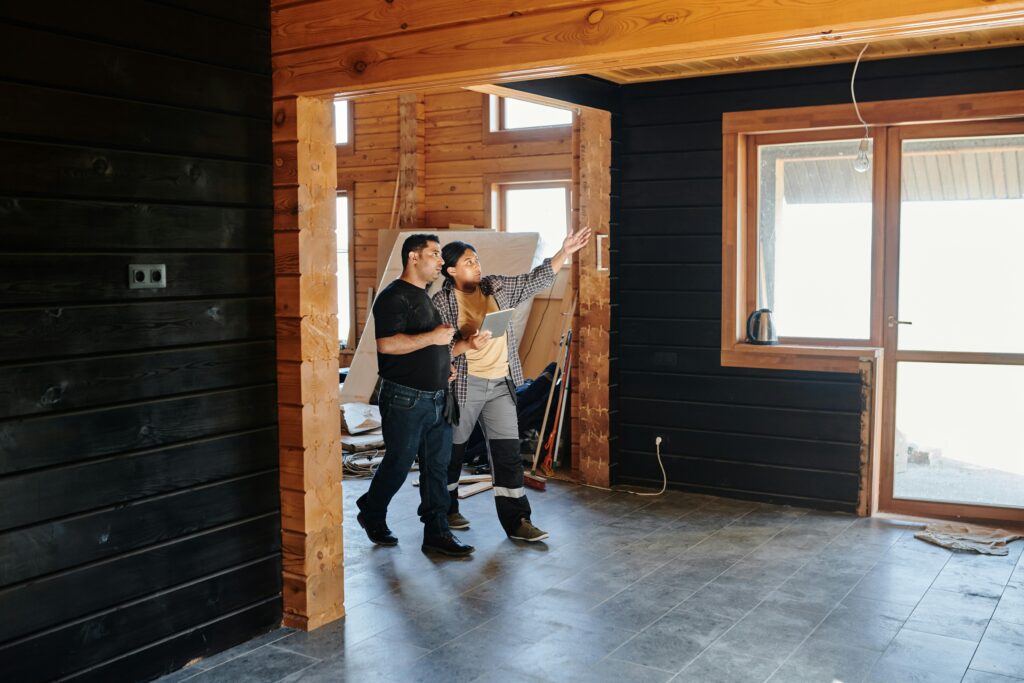Mistakes to Avoid When Flipping Houses

Photo by Mikael Blomkvist
Flipping houses can feel like the golden ticket to fast cash—buy low, fix it up, sell high, and pocket a nice chunk of profit. But the reality? It’s a game full of landmines, and one wrong step can turn your dream flip into a financial flop.
Whether you’re eyeing your first flip or you’ve already watched a few HGTV marathons and think you’re ready to swing the hammer, here are the costly mistakes you need to avoid—and how to stack the odds in your favor.
Overpaying on the Purchase
It all starts with the buy. If you pay too much for a property, you’ve already eaten into your profit before you ever pick up a paintbrush. Many new investors get caught up in the excitement of “potential” and convince themselves the market will keep climbing. Spoiler alert: markets don’t care about your optimism.
Instead, work backward from a conservative resale value. Subtract renovation costs, holding costs, agent fees, and a decent buffer. What’s left? That’s your max offer. If the numbers don’t work, walk away. There will be another deal.
Underestimating Renovation Costs
On paper, flipping sounds simple: slap on some paint, maybe toss in a new kitchen, and boom—profit. But in real life, one cracked pipe, hidden mold, or electrical nightmare can blow your budget wide open.
New flippers often estimate costs based on TV timelines or contractor quotes that assume nothing goes wrong. You need to budget for what you see and what you don’t. A $40,000 reno could quickly become $55,000 if you’re not careful—and those surprise expenses cut directly into your margin.
Get multiple quotes. Build in contingency. Expect the unexpected. And for the love of your profit, don’t rely on wishful thinking.
Trying to DIY Everything
We get it—you want to maximize your return, and YouTube made that tile backsplash look easy. But there’s a difference between saving money and sabotaging quality. Buyers notice bad craftsmanship, and inspectors definitely will.
You don’t need to hire out every detail, but know where your skillset ends. Poor electrical work, bad plumbing, uneven flooring—these are red flags that will cost you in the final sale. Time is money, and poor work slows both.
Bring in pros where it matters, and focus your energy on project management and value-add decisions.
Ignoring the Local Market
One of the biggest missteps? Designing a flip that you would live in, instead of what your target buyer actually wants—or can afford.
If the neighborhood averages $180k homes, don’t pour $80k into luxury tile and high-end appliances expecting a $300k sale. The market won’t follow your logic. You’re not flipping in a vacuum—buyers compare your house to others in the same price range and zip code.
Study comps. Visit open houses. Know what features move homes in that area. You’re not building a dream home—you’re crafting a product that sells.
Bad Timing = Expensive Holding Costs
Every month you hold onto a property, you’re bleeding money: mortgage payments, utilities, insurance, property taxes. New flippers often forget about these “silent killers” while chasing the perfect paint color or waiting for one last detail to be perfect.
Delays in permits, inspections, or contractor scheduling can kill your timeline—and your profit. The longer your house sits, the less appealing it becomes. And don’t forget, you’re often paying interest on money borrowed to fund the deal.
Have a clear project timeline and build in buffers. Fast flips aren’t just exciting—they’re financially smart.
Neglecting Permits and Inspections
Sure, skipping a permit might save you a few days and some red tape—but it can come back to bite you hard. Unpermitted work can delay closings, spook buyers, or worse, require you to tear out and redo completed work.
Inspections are your insurance policy against surprises. Get them before you buy, and again before listing. It’s far better to fix an issue on your own timeline than to lose a sale because an inspector caught what you missed.
Playing it “under the radar” can work in the short-term—but real estate karma is real, and it’s not cheap.
Relying on Hope Instead of a Strategy
This is the silent killer: going into a flip with no defined budget, no timeline, and no plan other than “I think we can make money on this.”
Flipping isn’t gambling—it’s a business. You need to treat it like one.
Run the numbers before you buy. Track every expense. Monitor your ROI. Be aggressive with your spreadsheet, and conservative with your profit estimates. The best flippers are spreadsheet nerds with paint on their shoes.
| Mistake | Why It’s Costly | What To Do Instead |
|---|---|---|
| Overpaying for the property | Kills profit before renovations even start | Work backwards from realistic resale value |
| Underestimating renovation costs | Budget gets blown by unexpected expenses | Get multiple quotes and build in a 10–20% buffer |
| DIY-ing everything | Poor quality work lowers buyer confidence | Hire pros for critical systems and finish work |
| Ignoring the local market | You over-renovate and overprice for the area | Tailor design and price to local comps |
| Bad timing or slow turnaround | Holding costs pile up and eat profit | Stick to a tight timeline with contingency built in |
| Skipping permits and inspections | Can delay closings or require rework | Pull proper permits and inspect at every stage |
| No strategy—just hope | Random choices lead to random (bad) results | Run the numbers, track ROI, treat it like a business |
Final Thoughts: The Stackonomics Approach
Flipping can absolutely build wealth. It’s fast, dynamic, and profitable—but only when you stack your strategy smartly.
At Stackonomics, we believe in layered financial success. Flipping houses isn’t a one-off—it’s just one building block in your bigger financial plan. Combine it with smart budgeting, investing, and income growth, and you’re not just flipping houses—you’re flipping your whole financial future.
